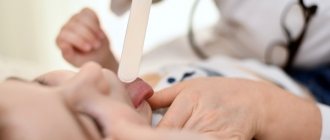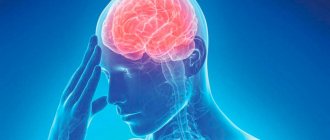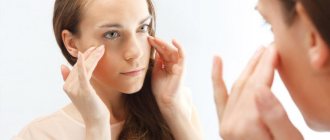In this article we will tell you:
- What is an eating disorder
- Causes of eating disorders
- Classification of eating disorders
- How to recognize an eating disorder
- Eating disorders in children and adolescents
- Treatment of eating disorders
Eating behavior
- this is a person’s attitude towards food intake, a complex of unconditioned reflexes and conscious decisions that determines the amount and composition of what is eaten in various conditions. Ideally, the body should receive all the necessary nutrients and the optimal amount of calories, and the person himself should enjoy food.
But often a person’s eating behavior differs from the norm, which has a serious impact on health and quality of life. What is considered normal, how to distinguish the type of eating disorder, what are the causes of disorders and how to cure this condition?
Types of Eating Disorders
Food is a source of existence and energy only if it is rationally consumed in the required quantity. Any deviation from the norm is harmful to the psyche and physical health.
An eating disorder is, in fact, a mental illness, and not just a diet or lifestyle, and this illness can manifest itself in the form of partial refusal to eat, alternating periods of overeating with periods of diligent fasting, all sorts of purging - from specially induced vomiting to laxatives.
The most common and at the same time dangerous eating disorders are:
- Anorexia nervosa is a mental illness that is more common in young people and adolescents, predominantly female. This pathology is characterized by non-acceptance of one’s external image, conscious refusal of food and the deliberate creation of obstacles to its absorption by the body. The result is a critical weight loss, but even then it seems to the patient that his body weighs unforgivably much and the fight against non-existent volumes must be continued. In some difficult cases, the disease becomes irreversible and leads to death. Note that the signs of the disease are easy to recognize, because anorexics do not notice their problem and, accordingly, do not hide.
- Bulimia is the opposite disorder of anorexia, it is much more difficult to recognize. The disease is characterized by uncontrolled attacks of appetite and overeating, after which the person feels an acute sense of guilt and gets rid of what he has eaten through vomiting or laxatives. People suffering from bulimia most often weigh within the normal range and in their behavior during the period without attacks do not differ from healthy people.
- Binge eating disorder is an eating disorder that involves episodic binge eating. Unlike patients with bulimia, those suffering from this type of eating disorder do not accompany bouts of gluttony with purging the gastrointestinal tract or fasting, but experience psychological discomfort, guilt and self-dislike.
- Orthorexia is an eating disorder in which proper nutrition becomes the meaning of life. People stop enjoying delicious food and limit their choice of products, focusing only on their beneficial qualities. If this desire had a measure, it would be worthy of praise. But patients are in constant fear of the possibility of breaking the rules and experience self-hatred when consuming prohibited foods.
Photo: PhotoMIX-Company/Pixabay
What is the problem
Almost all experts are sure that the reason for such violations lies in the psychological state of a person. In his perception of himself, his attitudes and values. There is a physiological theory of the problem, but it is rather shaky.
According to her, an irrational attitude towards food is formed on the basis of impaired metabolism. Another problem is an imbalance of neurotransmitters, in particular serotonin.
Psychological factors play a decisive role. They are divided into several categories.
- Comes from childhood . Research has found that girls raised in families with emotionally cold parents most often suffer from anorexia and bulimia. They themselves claimed that the relationship with both their father and mother was negative. The first was distinguished by restraint and emotionlessness towards his daughter, and the second was the dominant one in the family, with overprotection and a desire for perfection. In such a family, the girls did not find support or adequate understanding of their actions. Growing up, the child sought to please others and sought their approval. The thought of him doing the wrong thing or looking inappropriate causes anxiety and tension. Losing weight to the point of exhaustion in this case is the desire for perfection, for an ideal image. There is an assertion that anorexia, bulimia and, as a consequence, physical exhaustion are an attempt to escape into childhood, the presence of emotional dependence on a tyrannical mother and a problem in separation from the family, fear of acquiring the forms of an adult.
- Social norms . Society dictates its ideals to us. In the modern world, the ideal of beauty, attractiveness and success is a slender, thin figure. Fatness tends to become a symbol of hostility, ugliness and ridicule. Because of this stereotypical thinking, many people put themselves through eating trials to the point of exhaustion and insanity. For example, Christina Richie was the owner of curvy figures until journalists began to make fun of her. After that, she saw a program about anorexia on TV and she herself became its hostage. Such dangerous experiments brought her to a rehabilitation center.
- Heredity . It has been established that if one of the relatives suffered from eating disorders, then there is a possibility of passing this tendency on to descendants. Bulimia and anorexia are more than 50% hereditary.
- Stress . Any traumatic events and changes in life are accompanied by emotional stress, worries, and their manifestations often involve eating habits. One person develops apathy and aversion to food. Others, on the contrary, eat away at their stress.
Angelina Jolie, with a height of 169 cm, weighed only 37 kg. According to her, constant stress pushed her to anorexia nervosa: the death of her mother, divorce from her husband, operations to remove the ovaries and breasts. The director of the film “Maleficent” forced her to return to a more or less normal weight. He set the condition for her to gain at least 10 kg in order for her to be approved for the role.
Causes of eating disorder
An eating disorder is a psychological pathology and can be activated for various reasons. This could be stress, hereditary factors, psychological trauma in children, aspects of upbringing, or promoted beauty standards imposed by society.
There is also a professional risk area. These are professions that involve maintaining an impeccable appearance - models, actors, ballerinas, athletes, flight attendants, television presenters.
The task of the psychotherapist is to find the causes of the eating disorder in the process of consultations and psychological work with the patient, and then treat them, minimizing the risk of relapse.
It will be difficult for an ordinary person without special experience and education to figure out what exactly caused the mental disorder of his loved one, but he can notice the alarming symptoms and begin to act.
Pregnancy and diet
One cannot ignore such a condition as pregorexia. It applies exclusively to pregnant women and consists of following strict diets and a strict training schedule even during pregnancy.
As a rule, it is very difficult for such a woman to accept the fact of her interesting position. Fearing weight gain, the appearance of edema and stretch marks, the expectant mother continues to restrict herself in food and exercise.
This disorder has its own risk group. As a rule, it includes women who previously, before pregnancy, suffered from psychogenic eating disorders, as well as suggestible individuals who follow approved standards.
The expectant mother must understand how such a lifestyle will affect her baby. Lack of nutrition will lead to underdevelopment of the fetus, because the baby does not receive vital nutrients.
ed elements. He faces anemia, dystrophy, and, probably, developmental abnormalities.
In addition, the following paradox is quite possible: in pursuit of beauty, a woman will lose even what she has. She shares her scarce supply of essential nutrients in half with the baby, so not only the child’s body suffers, but hers too. The result is dull, useless hair, brittle nails, and sagging skin. That is why it is so necessary for the expectant mother to receive a complete set of all important nutritional elements, to eat properly and balanced.
During pregnancy, a woman can gain weight from 5 to 18 kg - it all depends on her initial weight and this is quite normal.
What signs should you be wary of?
It is quite easy to detect alarming symptoms in your loved ones, especially if you live together.
Here are the most common signs that a person has an eating disorder.
Anorexia.
- Abnormally low weight of a person - 15% error from the normal value.
- Absence of three or more menstruation in girls.
- Objective perception of your mass and figure.
- Obsession with the topic of food.
- Denial of the violation itself.
- Suicidal thoughts.
- Daily weighing on scales.
- Avoiding eating in public.
- Rituals during meals (for example, chewing food thoroughly).
Bulimia.
- Uncontrolled amount of food consumed.
- Systematic use of methods to cleanse the body of food - taking laxatives and diuretics, inducing vomiting, intense physical activity, fasting or dieting.
- Low self-esteem is directly related to your own body weight.
- Blood vessels often burst and the eyes turn red.
- The habit of eating alone.
- Deterioration of relationships with friends and loved ones.
- Disappointment after eating.
- Stomach pain.
- Poor condition of teeth (stomach juice during vomiting thins tooth enamel).
Binge eating.
- Excessive amounts of food consumed uncontrollably.
- Inability to control appetite.
- During eating, food is practically not chewed.
- Preoccupation with the proportions of your figure.
- Low self-esteem, tendency to blame oneself for weakness and depression.
- Constraint from overeating.
- A person hides food from other family members.
- Problems with the gastrointestinal tract - pain, constipation.
- Frequent diets that end in failure.
- The cult of food (for example, carefully setting the table or separating food according to color).
If you see similar behavior in your loved ones, under no circumstances choose the position of blame. Try to reassure the patient, tell him that you are worried about his poor sleep or poor quality nutrition and would like to help.
Orthorex
Orthorexia is a pathological desire to eat exclusively healthy, wholesome foods. Such people are terribly afraid of products with GMOs, preservatives, and various biological additives. They do not accept store-bought meat; they strive to buy exclusively “village” products.
The second feature of such people is a feeling of superiority over others. A person is proud of his self-control, but takes others for a gray unprincipled mass.
Orthorex limits itself to many foods, depriving itself of useful nutrients.
And finally, another important feature of these patients is their obsession with sports. He occupies a leading place in their lives. For his sake, a person neglects social connections and various activities. Even if he is sick, he still continues to study. Sport for a person takes on a manic orientation. He can train for several hours, 2-3 times a day.
Scientists have calculated that the total number of hours of exercise should not exceed five per week. Anything more refers to obsessive training syndrome.
How exactly can you help a loved one with an eating disorder?
The following recommendations will help you take care of the health of your loved ones and help them overcome their illness:
- Give your loved one the confidence that you care about their problems, that you are always there and ready to listen and support. The very opportunity to consult with someone will give you confidence and activate the desire to start treatment. In conversation, try to avoid criticism and instructions - patients constantly feel guilty and reproach themselves for their weaknesses and behavior.
- Be patient. Your hysterics and anger will not help in solving the problem. And a loved one has already brought forward punitive accusations and a sentence against him without you.
- Don't push or insist on immediate action. It must be remembered that a sick person needs a significant period of time to accept the fact of his illness and want to be treated. Persistence will only cause aggression and frighten away the positive tendencies of trust between you.
- Never try to analyze the patient's appearance. It will also make the path to healing more difficult and undermine your loved one's confidence even more. Instead of talking about weight and figure, it’s better to tell him how worried you are about his health and want to help correct his mood.
- Encourage conversations about nutrition control. Let the person close to you understand that you are at the same time and feel your support. Believe in success and constantly encourage the patient with assurances that everything will definitely work out.
- Try to persuade your loved one to see a specialist. An eating disorder is a real illness, not a loss of control over your diet. It is important to find the cause of the disease, adjust self-perception and self-esteem. Such actions can only be performed by an experienced doctor.
Alcohol diet
Or drankorexia is a psychogenic disorder in which food intake is replaced by alcohol for the purpose of weight loss. Adherents of this diet think like this: in large quantities, alcohol dulls the feeling of hunger, plus it improves your mood. It is worth mentioning how wrong they are and what are the real consequences of such “nutrition”:
- alcohol addiction - constant hunger forces you to increase the amount of alcoholic drinks;
- damage to vital organs;
- mental degradation;
- impaired interaction with other people;
- tendency towards antisocial behavior.
It should be noted that drankorexia combines manifestations of two disorders at once - alcoholism and anorexia. But, despite the serious consequences, this violation was never recognized as an official disorder.
Here's an example: a 17-year-old girl managed to lose more than half of her weight. While this process was taking place, her parents naively believed that she was intensely involved in sports. And only when their daughter began to experience pain in the liver area, she underwent examination. Then the reason for her amazing weight loss became clear.
Treatment of drankorexia involves combining several areas.
- Removing toxic substances from the body through detoxification therapy.
- Getting rid of alcohol addiction.
- Consultation with a nutritionist to gradually include certain foods in the diet.
Which doctor should I contact for eating disorder?
If you have eating disorder, you need to see a doctor; this is a serious disease and self-medication will be the height of irresponsibility. Such disorders are treated by a psychotherapist or psychiatrist.
The most effective treatment is a combination of talk therapy and medication.
Photo: canva.com
Persuade your loved one to see a doctor. Calm his fears, tell him that he will be listened to attentively and respectfully during the consultation and will be helped. Encourage him that his illness is being treated and the sooner he starts, the sooner the long-awaited relief will come.
How to identify patients who need further evaluation?
We use the SCOFF test, which includes 5 questions, the possible answers are only “yes” or “no”. You need to answer them as honestly as possible. To do this, you need to explain to the person why this is an important survey.
1) Sick. Does a person vomit when he feels like he has eaten too much? 2) Control. Does the person worry about losing control over how much they eat? 3) Onestone. Have you lost more than 6.5 kg of weight in the last three months? 4) Fat. Does a person consider himself fat, while others think he is too thin or of normal body weight? 5) Food. Can a person say that food dominates his life?
If a person gives a positive answer to two out of five questions, we assume that the person has prerequisites for an eating disorder. We can subtly and gently convey to him that he should visit a related specialist who can conduct a full diagnosis.
| There is a certain communication problem - it is very difficult to convey to a person that he needs to come to a psychotherapist for a consultation. There are some stereotypes in society regarding mental health care. Sometimes people think that if a person turns to a psychiatrist, he is immediately registered, socially restricted and isolated. Therefore, it is very important to convey information to the patient that he will not be registered or hospitalized, but will be helped to establish healthy contact with food. |
What will happen if left untreated?
Selective nutrition leads to a deficiency of nutrients. Normally, a person’s diet should be varied, since all vitamins and microelements cannot be obtained from one group of foods. If any category is excluded, the body will begin to suffer from a lack of substances. In the case of IORPP, not one, but several product categories are excluded. Often the patient’s daily menu is reduced to the same product.
Unwanted food causes mental rejection, so the patient loses his appetite.
It leads to:
- weight loss, even to the point of exhaustion;
- disruption of absorption mechanisms in the gastrointestinal tract;
- vitamin deficiency
To maintain the vital functions of patients, parenteral nutrition must be used. If the original (mental) cause of the disorder is not eliminated, dependence on this method of eating may develop.
Why is “eat less, move more” not enough?
A study was conducted among primary care physicians in the United States. They were asked: How far do you go beyond the phrase “eat less, move more” in your nutrition recommendations? Most respondents did not go further than this phrase. A person has no understanding: what does “eating less” mean? Less than who? Maybe I don't eat enough anymore.
A person has no understanding of how to form healthy eating habits. What does “move more” mean? Without disclosing details, we are not creating guidelines for what physical activity should be. For example, WHO recommendations state that a person should devote at least 300 minutes per week (45 minutes per day) to moderate-intensity physical activity: walking, walking.
Disease detection
Diagnosis begins with collecting anamnesis. Parents tell doctors in detail what selective nutrition means when the symptoms of the disease begin to appear. It is important to identify the event that became the trigger of the disorder.
If the problem is recognized in a timely manner, the symptoms will only be mental. In advanced cases, somatic manifestations may also be present.
Therefore, the doctor pays attention to:
- correspondence of body mass index to the age norm;
- biochemical parameters;
- the presence or absence of gastrointestinal disorders;
- vegetative signs – weakness, dizziness.
The diagnostic complex includes measurement of height and weight, general and biochemical blood tests, and a primary neurological examination. If abnormalities are detected, the child is referred to specialists.
Diagnostics
Primary diagnosis of the disease in most cases is carried out a year or later after the appearance of the first symptoms. This is explained by the fact that patients refuse to admit that they have signs of pathology and carefully hide them.
Most patients seek help when problems with the digestive system occur. Patients complain of excessive fatigue when performing usual activities. The disease is diagnosed by a clinical psychologist, psychiatrist and somatic specialists. After collecting anamnesis, it is recommended to use specific studies.
Conversation
When talking with the patient, the doctor determines the medical history and signs of the disease. He learns from the patient how he eats and treats his external characteristics. The specialist asks whether the person is experiencing nervous tension and stressful situations. To obtain reliable data, specialists conduct a conversation in the presence of a close relative. This is explained by the fact that a person can hide and smooth out certain facts about the disease.
Personality questionnaires
This form of examination is used to determine the patient's character traits and emotional states. The techniques provide an opportunity to determine the patient’s social problems and how much his opinion depends on others. During the diagnosis, the degree of tendency to self-blame is determined. The specialist determines whether the patient is in a state of stress. As well as psychological maladjustment. Diagnosis is carried out using the Dembo-Rubinstein method, the Eysenck questionnaire, and the eating behavior rating scale.
Projective techniques
Additionally, the use of interpretation and drawing tests is recommended. They provide the opportunity to identify denied and hidden sick tendencies in the form of fear of weight gain, non-acceptance of one’s shape, impulsiveness, and the need to receive positive assessments from others. It is recommended to use test selection, a thematic apperception test, and a “self-portrait” drawing.
If pathology is suspected, it is recommended to carry out a differential diagnosis. It provides the opportunity to distinguish between somatic diseases and psychogenic disorders. The patient should consult a gastroenterologist, hematologist, neurologist, or therapist. The choice of diagnostic techniques is directly influenced by the clinical picture of complications. It is recommended to conduct instrumental examinations, laboratory examinations of the digestive system and internal organs.
How does selective eating manifest itself?
To seek help in a timely manner, it is important for parents to understand where overindulgence ends and symptoms of selective eating appear:
- The child refuses not a specific product, but an entire group. The criterion may be the category of food (meat, dairy products), its color, shape or consistency.
- Refusal is expressed by the inability to eat what is offered. The child not only winces or cries, but experiences difficulty swallowing food.
- A physiological reaction occurs to what is eaten. Even if parents force the child to swallow food, it ends in gastrointestinal upset.
The child cannot explain why he does not eat. At a conscious level, motives are inaccessible to him.
Does IORPP occur in adults?
Eating disorders in adults have similar symptoms. It is easy to confuse orthorexia with ARFID. With this disease, a person also eats only certain foods.
However there are a few differences:
- A person with orthorexia can explain why he eats one thing but not another. With IORPP, there is no logical basis for dividing food into “suitable” and “unsuitable”.
- Orthorexia is usually based on an obsession (for example, about the dangers of certain foods); it is absent in selective eating.
- Orthorexia encourages the creation of personal menus and criticism of other people's diets. IORPP is limited to the rejection of “unsuitable” products.
A symptom similar to ARFID is also observed in bulimia. Patients also divide food into “good” and “bad.” However, they do not refuse the “bad” one, but use it as punishment.










